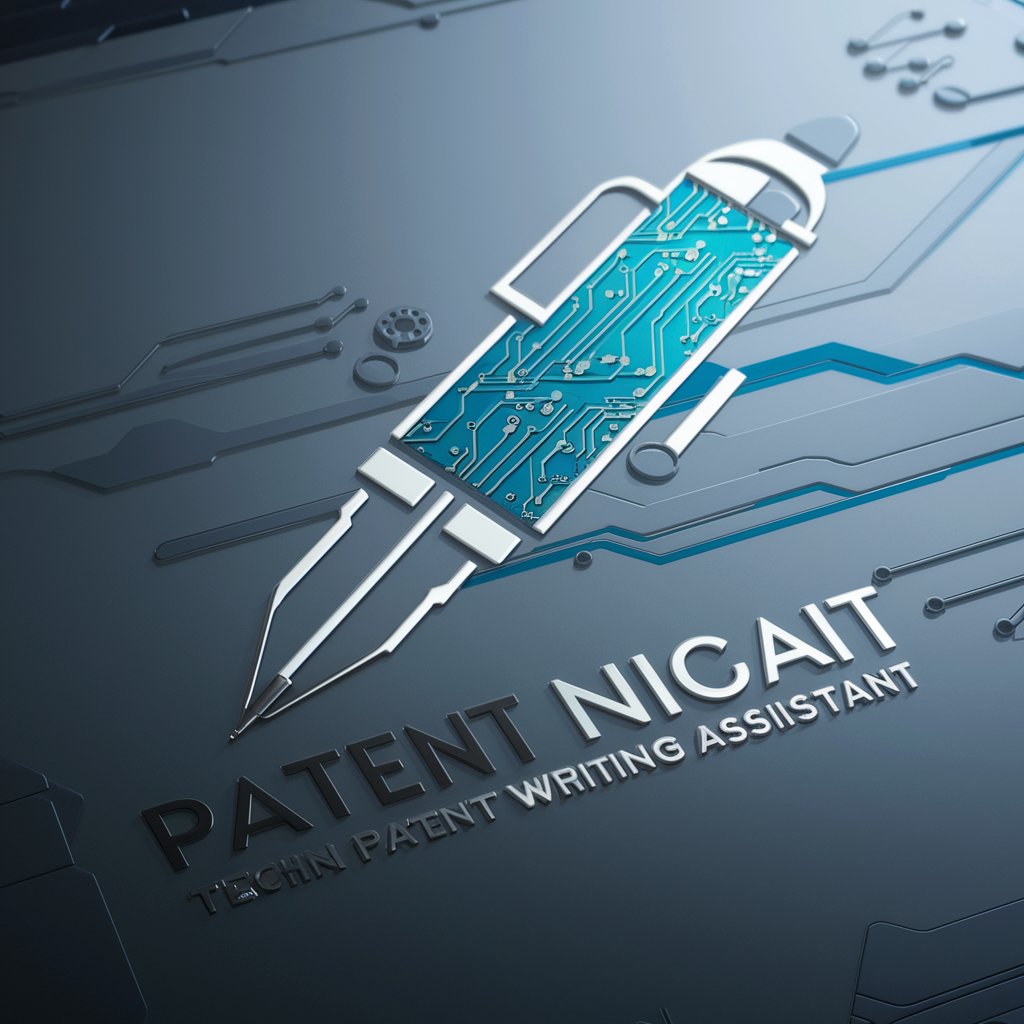
发明内容、背景技术&智能编号-绿洲慧写专利辅助撰写系统-AI tool for patent drafting
AI-powered assistant for patent content creation

绿洲慧写专利辅助撰写系统,帮助您撰写专利发明内容和背景技术并为权利要求书和具体实施方式智能添加编号
生成发明内容
生成背景技术
为权利要求书加编号
为具体实施方式加编号
Get Embed Code
Introduction to 发明内容、背景技术&智能编号-绿洲慧写专利辅助撰写系统
The 发明内容、背景技术&智能专利辅助撰写系统介绍编号-绿洲慧写专利辅助撰写系统 is a specialized AI-driven tool designed to assist professionals in drafting critical sections of Chinese patent applications. Its core purpose is to enhance the quality, consistency, and efficiency of writing key parts of a patent specification, specifically 'Description of the Invention' (发明内容), 'Background Art' (背景技术), and the systematic insertion of reference numerals (智能编号) into claims and embodiments. The system was developed in accordance with the drafting conventions under Chinese Patent Law and is guided by rule-based formatting, ensuring legal and structural compliance. It automates highly technical and linguistic tasks that typically require expert-level understanding, thus allowing patent agents, inventors, and R&D teams to focus more on innovation rather than documentation structure. **Example**: An R&D engineer invents a new sensor calibration method. Rather than spending hours adapting technical descriptions into patent-compatible language, they input their drafted claims into the system. The system then outputs a fully compliant 'Description of the Invention' using the claims, reform绿洲慧写专利系统ulated in the legally appropriate narrative structure, ensuring consistency between the claims and the specification.
Core Functions and Applications
Automatic Generation of 'Description of the Invention' (说明书-发明内容)
Example
Given a draft of claims for a medical imaging apparatus, the system reformats each claim into standardized narrative language using a defined template, such as converting 'according to claim 1...' to 'in one possible embodiment...'.
Scenario
Patent agents often need to ensure the description mirrors the language and content of the claims. This function ensures verbatim consistency and structural transformation in seconds, eliminating manual errors or omissions.
Automated Drafting of 'Background Art' (说明书-背景技术)
Example
A user submits technical notes about current AI model compression methods and the related drawbacks. The system processes this to generate a concise, professional background section highlighting the shortcomings and setting up the context for the invention.
Scenario
When drafting patent applications, accurately framing the prior art and identifying existing gaps is crucial. This function helps users convert informal technical summaries into legally valid background disclosures.
Intelligent Reference Number Insertion (智能编号填加)
Example
When a user provides a list of claim terms and their corresponding component numbers (e.g., 'motor: 10, sensor: 20'), the system injects these numbers into the text at appropriate locations with proper formatting (e.g., 'sensor (20)').
Scenario
This function is invaluable during the final formatting stage of a patent application, ensuring that all components mentioned in claims or embodiments are correctly labeled according to their assigned numbers, preventing rejections or office actions due to inconsistent notation.
Target Users and Beneficiaries
Patent Agents and Attorneys
This group benefits the most from the system’s automation of tedious drafting tasks. It ensures fast turnaround, adherence to CNIPA norms, and precise correlation between claims and the specification — critical factors in avoiding rejections and rework.
R&D Engineers and Technical Innovators
Engineers with novel technical solutions but limited legal drafting skills can use this system to produce polished, legally structured documents directly from their disclosures. This bridges the gap between innovation and patent protection.
How toPatent Writing Tool Guide Use 发明内容、背景技术&智能编号-绿洲慧写专利辅助JSON代码错误修正撰写系统
Step 1: Access the Tool
Visit aichatonline.org for a free trial without login, also no need for ChatGPT Plus. The tool is instantly accessible and does not require installation or subscription to start using.
Step 2: Choose a Task
Select from key patent-writing tasks: generating 'Invention Summary', drafting 'Background Technology', or applying 'Smart Numbering' to claims or implementation sections. Each task is aligned with standard Chinese patent office formatting rules.
Step 3: Input the Required Content
Provide necessary input such as a draft of the claims, a description of the current technology and its drawbacks, or a numbered parts list. The tool strictly follows input-output constraints to ensure accuracy and compliance.
Step 4: Receive Structured Output
The tool will generate compliant, structured, and logically formatted patent text—divided clearly into sections as required, using controlled professional language and numbered structure where appropriate.
Step 5: Optimize with Iteration
Try other advanced and practical GPTs
Creative Brochure Designer
AI-powered design for property brochures

Espalhando a Doutrina Espírita Responde!
AI-powered insights for spiritual and personal growth.

My English Editor
AI-powered editor for clear, polished English

Graph & Chart Creator - Gia
AI-powered, customizable data visualizations.

恋愛ポエム
AI-powered love poems for your posts

CapCut Expert
AI-Powered Guidance for Pro-Level CapCut Editing

TLDR Software Engineer
AI-powered code answers in one line.

Shopify Sidekick
AI guidance built right into Shopify

Esperto Matematica Discreta
AI-powered expert for discrete mathematics

Asesor de Tesis
AI-powered support for every thesis stage

Evaluador de Tesis
AI-powered Thesis Review & Enhancement

MacBook Helper
AI-powered assistant for your MacBook tasks

- Technical Writing
- Patent Drafting
- Legal Automation
- IP Management
- Engineering Filing
Top 5 Questions about 发明内容、背景技术&智能编号-绿洲慧写
What types of patent documents can this tool help generate?
It supports core components of Chinese invention or utility model patents, including the invention summary (说明书-发明内容), background technology (说明书-背景技术), claims with numbering, and detailed implementation descriptions with technical part references.
Can I use this tool without understanding patent law?
Yes. The system embeds logic based on Chinese patent law rules and claim drafting practices. It guides users step-by-step with clear formatting, terminology, and legal structure compliance, making it beginner-friendly for engineers and researchers.
How does the smart numbering feature work?
You provide a part list with numbers and corresponding components. The tool automatically inserts the correct number after each component name within your claims or implementation descriptions, formatted per patent office standards.
Does it support iterative drafting across multiple sections?
Absolutely. It is optimized for consistency across sections. For example, the claims you enter can directly be used to generate the invention content, ensuring semantic and structural alignment throughout your patent draft.
Is the tool only suitable for Chinese patents?
It is primarily tailored for CNIPA (China National Intellectual Property Administration) compliance. However, its structured output and logical drafting principles can inspire drafts for PCT or US filings with minor modifications.






